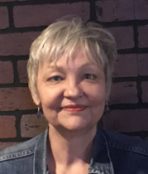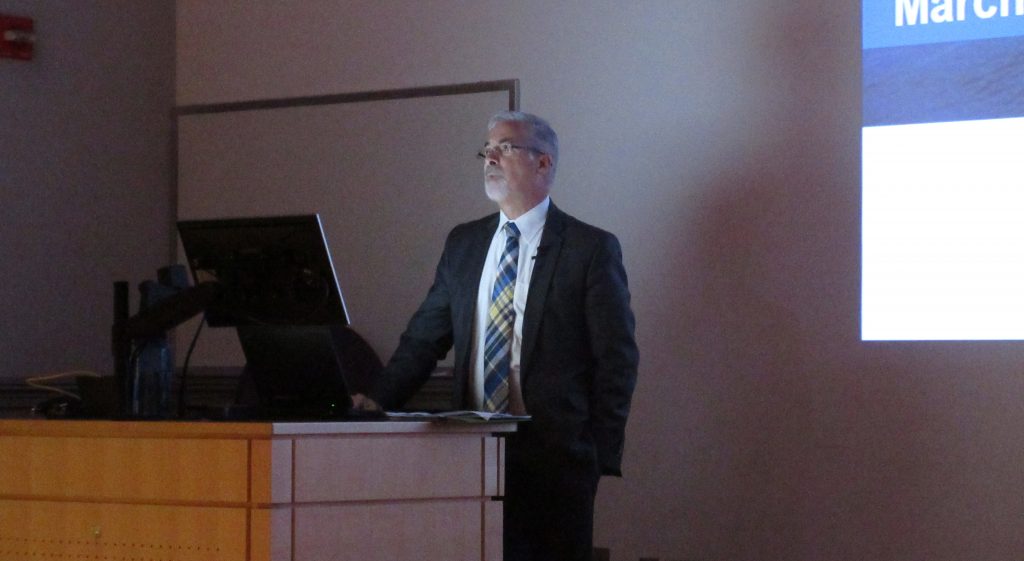-
March 14, 2016
PacTrans Seminar Series: Charlie Howard Seminar Sets a Great Backdrop for Current Region Transportation Climate
Yesterday afternoon, Thursday March 10, Charlie Howard, Director of Planning at the Puget Sound Regional Council (the Puget Sound Region’s MPO), gave a great PacTrans sponsored talk to over 100 students, faculty/researchers, and industry practitioners. Mr. Howard, an urban planner, speaking in front of a room full of engineers, spent the majority of his time discussing the general trends and current climate in which we find out region’s transportation system. He discussed growth, issues of congestion, and Washington State’s unique situation with the Growth Management Act that enables urban growth boundaries, beyond which development is discouraged.
As he spoke about our regional transportation needs he outlined the region’s comprehensive transportation plan and budget, which lead him to speak briefly about funding gaps for future transportation investments. Finally this brought Mr. Howard to what he sees as the major issues facing our future transportation workforce:
The first issue was funding sources. Our state and country has historically leaned on the gas tax, which is, in a sense, a pay-per-mile system. However, it has been politically unpalatable to raise the gas tax even to keep up with inflation for the last two decades. This coupled with the emergence of hybrid/electric vehicles and more fuel efficient typical vehicles, has diminished the return that the gas tax provides to government to make transportation infrastructure improvements. Two widely published alternatives are toll roads (pay-per-use) and another form of pay per mile. Neither of these options have sat very well with the general public either.
The second issue that Howard discussed was the broken state of our High Occupancy Vehicle (HOV) lanes (or carpool lanes). The intent of these lanes is to provide a free flowing lane so that public transportation can move efficiently and reliably, and it allows users who fill their car with other travelers to use it too. A decade ago, the HOV lanes could be set at 2+ passengers per vehicle for authorized use and the lane would provide unimpeded flow for all users. Today, with a 100% rise in congestion, and the HOV lanes still set at 2+ passengers per vehicle, busses and carpoolers in the HOV lanes are sitting still in the same congestion as the single-occupancy users in the general traffic lanes. Why don’t we change the rules to 3+ passengers per vehicle you might ask? Well because when tax payers sitting in stand-still traffic see a basically empty HOV lane they feel cheated. Howard noted that 10 of our 14 regional HOV lanes are “broken” in this way.
This brought him to the last issue discussed which was right-of-way prioritization. As the Puget Sound Region continues to grow, and urban growth boundaries and natural obstacles (like the sound and the mountains) keep development contained, congestion will only get worse. There will be a tipping point in the near future when we can’t accommodate everything for everyone. Mr. Howard commented that we will need to begin prioritizing the most efficient forms of transportation while simultaneously making sure to accommodate the most vulnerable populations on our region. This again will be a difficult sell to the general public.
While it went virtually unspoken through Mr. Howard’s talk, the general underlying theme with all of these issues is that they are universally unpalatable to the public. In a follow up question after his talk, Mr. Howard said that he sees the biggest hurdle with remedying all of these issues is: how the transportation community engages the public, how they educate the public, how they genuinely listen to the public’s concerns, and ultimately how they deliver the necessary changes. This message is a great reminder to engineers that even though we may find the best solutions to our communities’ most pressing issues, we must present our findings and ideas in meaningful ways or those solutions will end up in a report on a bookshelf in some government archive.
PacTrans would like to extend a huge thanks to Mr. Charlie Howard for taking the time to present to us. We would also like to thank those who joined us for the presentation. To those who attempted to log on to the webinar from home, we apologize that technical difficulties denied us the ability to show it live. If you are still interested in watching the presentation, we have uploaded it for your viewing pleasure.
Please click here for part I, and click here for part II.



